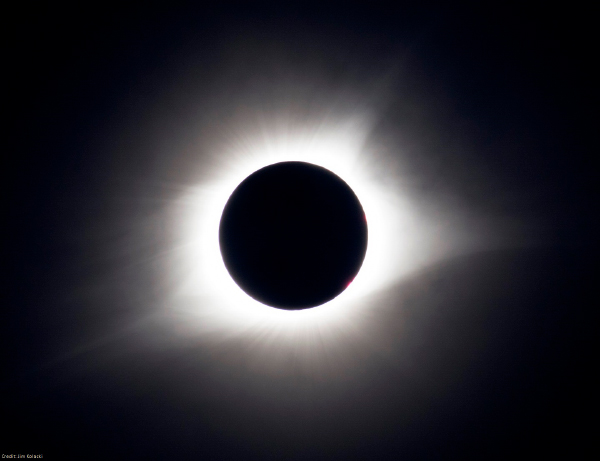Mercury makes its best evening appearance in mid-to-late March. For morning watchers, the best time to catch the smallest planet is late August to early September.
Venus can be seen in the morning sky until early April. After that, catch the brightest planet in the evening sky in late July until the rest of the year.
Mars starts slow in 2024. The red planet is in the morning sky but not easily visible until April. By November, it will be brighter and easy to spot.
Jupiter starts 2023 in the evening sky, but only until late March. By late July, the king planet will be high enough to observe in the morning sky. Jupiter shines in the evening sky again by October.
Saturn also starts 2023 in the evening sky, but only through mid-February. Catch the ring jewel in the morning sky in mid-April. From early August until year’s end, Saturn can be seen in the evening sky.
January
January 2: Earth at perihelion, closest point to the Sun, 91.4 million miles
January 3: 20th anniversary Spirit rover lands on Mars
January 5: Latest Sunrise: 7:23 a.m. CST in Milwaukee
January 24: 20th anniversary Opportunity rover lands on Mars
January 27: Mercury and Mars very close in morning sky, difficult to see
February
February: Launch of NASA’s Plankton, Aerosol Cloud Ocean Ecosystem (PACE) Earth Satellite
February 10: Chinese New Year—Year of the Dragon; second new moon after winter solstice
February 22: Mars and Venus close in morning sky
February 28: Saturn at solar conjunction—behind sun—moving to morning sky
February 29: Leap Day; Earth’s orbit is 365.25 days
March
March 10: Spring ahead! Daylight Saving Time begins
March 14: Pi Day and Einstein’s birthday
March 19: Spring begins at 10:06 p.m. CDT
March 21: Saturn and Venus close in morning sky—difficult to see
March 24-25: Penumbral lunar eclipse (very slight shading); Milwaukee 11:53 p.m. - 4:32 a.m. CDT
March 29: 50th Anniversary of Mariner 10, first spacecraft to visit Mercury

April
April 8: Total solar eclipse across Mexico and USA
April 10: Saturn and Venus close in morning sky
April 19: Mercury and Venus close in morning sky
May
May 18: Jupiter at solar conjunction—behind sun—moving to morning sky
May 18: 55th anniversary of Apollo 10 launch
June
June 4: Venus at superior conjunction-behind sun—moving to evening sky
June 4: Mercury and Jupiter very close in morning sky—difficult to see
June 13: Earliest sunrise, 5:12 a.m. CDT in Milwaukee
June 20: Summer Solstice starts at 3:51 p.m. CDT
June 27: Latest sunset, 8:35 p.m. CDT in Milwaukee
July
July 5: Earth at aphelion, the farthest point from the sun, 94.5 million miles
July 16-22: 30th anniversary of 21 Comet Shoemaker-Levy 9 (21 pieces) crashing into Jupiter
July 20: 55th anniversary of Apollo 11 and first steps on the moon
July 23: Pluto at opposition
August
August 1: Biggest full moon of 2022 (aka Supermoon)
August 12-14: Perseids meteor shower peaks
August 14: Mars and Jupiter close in morning sky
September
September 7: Saturn at opposition, opposite the Sun, up all night
September 17: Small partial lunar eclipse, 9:12-10:15 p.m. for Milwaukee
September 17-18: Supermoon, 7% bigger than average full moon
September 20: Neptune at opposition
September 22: Fall arrives with the autumnal equinox at 7:44 a.m. CDT
October
October: Launch of NASA's Europa Clipper to Jupiter’s moon Europa—arrives 2030
October 2: Annular solar eclipse; visible in Chile and Argentina
October 11: 40th anniversary of first American woman spacewalk, Kathryn Sullivan

November
November: Launch of NASA's Artemis II crew to orbit the moon and lunar rover VIPER, Volatiles Investigating Polar Exploration Rover; NASA’s Parker Solar Probe makes seventh Venus flyby
November 3: Fall back! Daylight Saving Time ends
November 16: Uranus at opposition
December
December 6: Mars starts retrograde (backwards) motion in constellation Leo
December 7: Jupiter at opposition, opposite the sun, up all night
December 7: Earliest sunset, 4:17 p.m. CST in Milwaukee
December 12-14: Geminid meteor shower peaks
December 21: Winter Solstice starts at 4:20 a.m. CST

